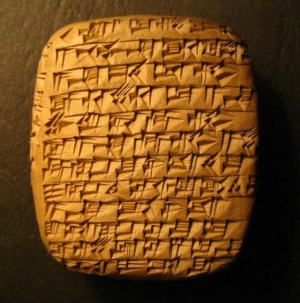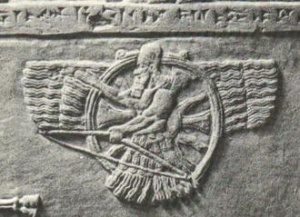Assyria: Difference between revisions
No edit summary |
No edit summary |
||
| Line 13: | Line 13: | ||
{{Template:Asuras}} | {{Template:Asuras}} | ||
== Footnotes == | |||
<references /> | |||
Revision as of 08:35, 6 April 2021

Assyria, also called the Assyrian Empire, was a Mesopotamian kingdom and empire of the Ancient Near East that existed as a state from perhaps as early as the 25th century BCE until its collapse between 612 BCE and 609 BCE; thereby spanning the periods of the Early to Middle Bronze Age through to the late Iron Age.
The Assyrians are a people who have lived in the Middle East since ancient times and today can be found all over the world. In ancient times their civilization was centered at the city of Assur (also called Ashur), the ruins of which are located in what is now northern Iraq.
- Ezekiel 31:3 "Behold, the Assyrian was a cedar in Lebanon with fair branches, and with a shadowing shroud, and of an high stature; and his top was among the thick boughs."
Alfred Edersheim associates Assyria with Babylon and the bondage of Egypt.[1]
Zechariah 10:11 And he shall pass through the sea with affliction, and shall smite the waves in the sea, and all the deeps of the river shall dry up: and the pride of Assyria shall be brought down, and the sceptre of Egypt shall depart away.
Asuras

Asuras (Sanskrit: असुर) are a class of beings or power-seeking clans related to the more benevolent Devas (also known as Suras) in Hinduism. ... Asuras are part of Indian mythology along with Devas, Yakshas (nature spirits) and Rakshasas (ghosts, ogres). Asuras feature in many cosmological theories in Hinduism.
"... in the Rig Veda, the word Asura is an adjective which means strong or powerful, an'd is invariably applied to gods except in the very last hymns of the last Mandala. In the BrAhmanas the word changed its meaning altogether, and Wcis applied to the enemies of gods about whom many new legends were invented." "A History Of Civilization In Ancient India", Chapter VIII. Sacrificial Rites and Legends of the BrAhmanas.
"The identification of the Asuras of Indo-Iranian mythology with the Assyrians was first suggested by Mr, H. M. Chadwick." Were the Asuras Assyrians?, Hannes Sköld, The Journal of the Royal Asiatic Society of Great Britain and Ireland, No. 2 (Apr., 1924), pp. 265-267 Published By: Cambridge University Press.
Ashur, also Assur, Aššur (Sumerian: 𒀭𒊹 AN.ŠAR2, Assyrian cuneiform: Rassam cylinder Anshar.jpg Aš-šur, also phonetically 𒀭𒀀𒇳𒊬 da-šur₄)[1] is an East Semitic god, and the head of the Assyrian pantheon in Mesopotamian religion, worshipped mainly in the northern half of Mesopotamia, and parts of north-east Syria and south-east Asia Minor which constituted old Assyria. He may have had a solar iconography.
Understanding the distinction between two types of religion such as pure religion and public religion and the roll of the temples of ancient systems of public welfare may help us come to an understanding of the ways of Cain, Nimrod and Pharaoh and the ways of the prophets, John the Baptist, Christ and the Apostles. The religion of the Asuras or Assyrians represent the spirit of the "Merchants of Men which makes slaves of men as merchandise and curse children as a surety for debt. That is the way of socialism which is the way of society having one purse as a public religion which you get when you have no pure religion.